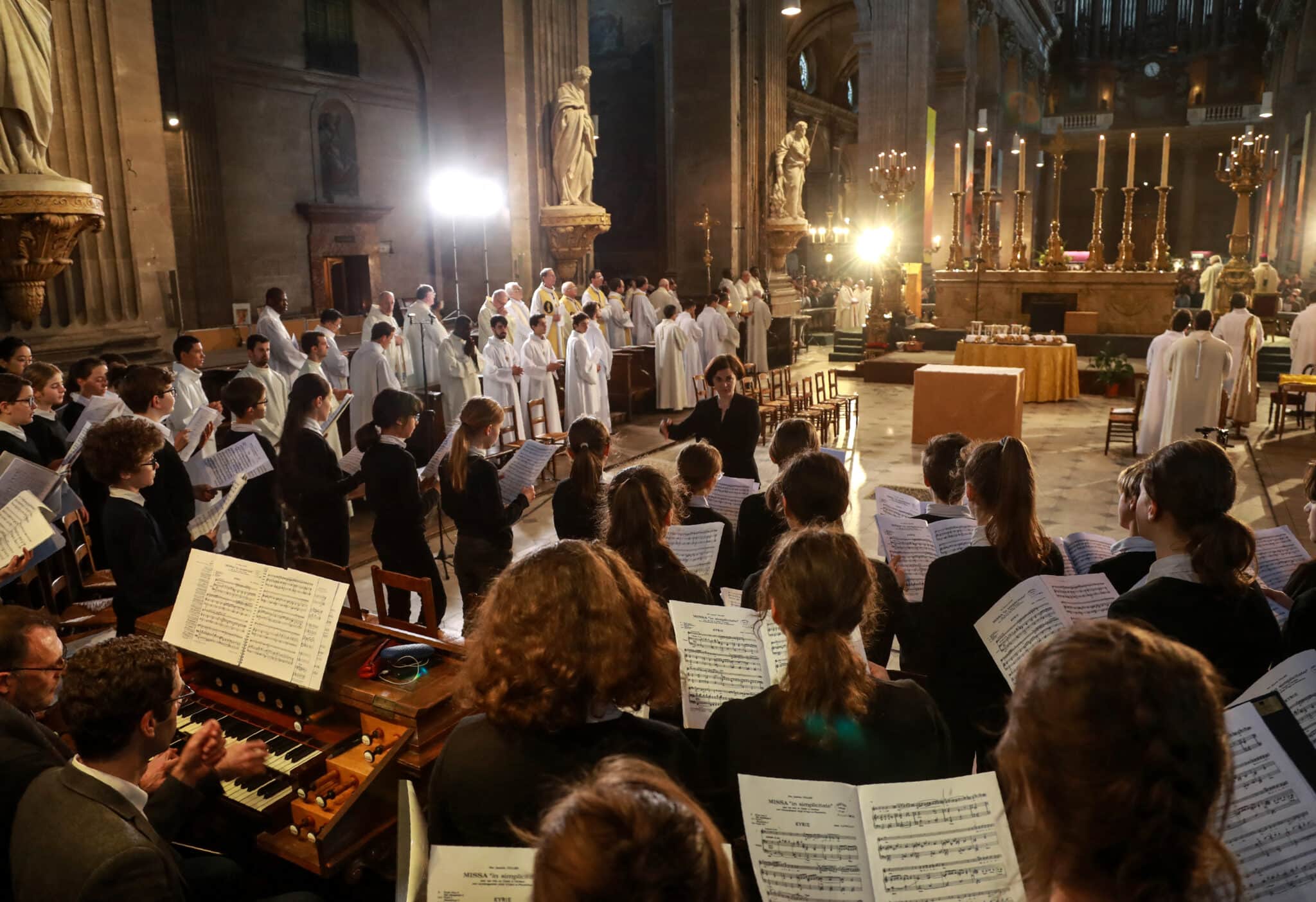Casting our eyes back a little, Felix Mendelssohn’s oratorio <em>Paulus</em> (St Paul) achieved considerable success after its first performance in 1836 in Düsseldorf and subsequent British premiere at the 1837 Birmingham Triennial Musical Festival. Drawing primarily on the Acts of the Apostles and narrating the conversion of Saul of Tarsus, the work combines Mendelssohn’s gift for heartfelt melodic writing (for example, in the aria Jerusalem, thou that killest the Prophets) with both opulent and energetic choral and orchestral textures (such as in “O great is the depth of the riches of wisdom”). Once a staple of British choral societies but now eclipsed by Mendelssohn’s later oratorio <em>Elijah</em>, <em>Paulus</em> can be heard in its original German text in a ravishing recording from Frieder Bernius and Kammerchor Stuttgart (Carus) as part of their landmark series of Mendelssohn’s complete church music.
We have also celebrated Candlemas: some of its most beautiful settings are to be found among the Tudor repertoire. William Byrd’s 1605 <em>Gradualia</em> provide the richest concentration of exquisite settings. These liturgical propers are naturally included as part of The Cardinall’s Musick’s survey of the complete choral works of Byrd (<em>The Byrd Edition 8</em>, ASV Gaudeamus) and include the tender <em>Senex puerum portabat</em>, the Latin Nunc dimittis with its radiant <em>Lumen ad revelationem</em> verse, and the expressive Responsum accepit Simeon.
All are performed with the group’s trademark vocal transparency and musical sensitivity. The remainder of the album includes works from Byrd’s 1589 <em>Cantiones Sacrae</em> collection, including <em>Ne irascaris, Domine</em>. The second section of this work is the famous <em>Civitas sancti tui</em> (“Thy holy city is a wilderness”). Its spare chordal writing – punctuated by poignant silences – as well as its lamenting “Jerusalem” phrases, represent an emotionally charged response to the situation in which Byrd and other recusant Catholics found themselves.
The life of Nicholas Ludford (c.1490-1557), who served as verger and organist of St Stephen’s Chapel in the old Palace of Westminster, straddled both the Henrician and Edwardian Reformations and the Marian Restoration. Prior to the chapel’s dissolution in 1547 (after which it served as the chamber for the House of Commons), Ludford composed some of the finest examples of votive antiphons and Mass settings of the early Tudor period. The florid and melismatic style he employed gives an indication of the calibre of the small number of choristers and clerks retained by the foundation.
Ludford’s transcendent <em>Missa Videte miraculum</em> is founded on plainchant for the feast of the Purification. It is scored for six vocal parts (including two treble lines) and reveals the composer’s skill in creating a vast musical canvas, contrasted with equally sonorous passages for smaller vocal groupings. The work is a centrepiece of an impressive album by the Choir of Westminster Abbey under James O’Donnell (Hyperion), which also includes the large-scale antiphon <em>Ave Maria, ancilla Trinitatis</em>. Also included is a reconstructed Kyrie, recreating the contemporaneous alternatim tradition of organ versets replacing certain verses. Most appropriately, these – played by O’Donnell – were recorded on the fine William Drake organ in the Chapel of St Mary Undercroft (formerly the crypt of St Stephen’s Chapel).
The reopening of Notre-Dame provided a welcome opportunity for reacquaintance with the Parisian cathedral’s vast musical legacy. Instantly called to mind is the miraculous survival of the famous Cavaillé-Coll grand organ, on which Olivier Latry made his peerless recording of the complete organ works of<br>Olivier Messiaen (Deutsche Grammophon).
Less familiar may be the excellent work of the five vocal groups which comprise the cathedral’s Maîtrise, which (the Covid pandemic not withstanding) maintained choral services at the Church of Saint-Germain l’Auxerrois after the fire. Marketed as the official reopening album, the young professional singers of the Maîtrise perform the large-scale Magnificat and <em>Trois Psaumes</em> by Yves Castagnet, Notre-Dame’s long-serving choir organist, under the direction of Henri Chalet (Warner Classics), recorded at the Church of Sainte-Clotilde in Paris before the building reopened.
Castagnet’s Magnificat, which sets the Latin text, is an engaging and appealing work drawing both on contemporary choral writing in the European and American traditions while retaining a directness of expression and richness of harmonic colour characteristic of the great Parisian organist-composers. The recording booklet highlights the work’s anticipated premiere in autumn 2025; the work avoids vocal complexity and would seem likely to be taken up widely thereafter.
Unlike the grand organ, Notre-Dame’s choir organ was irreparably damaged in the fire, but may be heard prominently in two older recordings showcasing the work of the Maîtrise. <em>Notre-Dame: Cathédrale d’émotions</em> (Warner Classics) is a wide-ranging compilation of works encompassing plainchant (a Responsory for the Office of the Crown of Thorns), medieval music, contemporary commissions and even British carols (Holst, Rutter and Mathias).
<em>Le Livre de Notre-Dame</em> (currently CD only: Maîtrise Notre-Dame de Paris) is a fascinating collection of 15 contemporary French works for upper voices commissioned to mark Notre-Dame’s 850th anniversary in 2015. Sung by the children of the Maîtrise under the direction of Émilie Fleury, it displays a highly accomplished ensemble, whose present generation are surely reinvigorated by their return to the resplendent cathedral.
<em>Tom Winpenny is a freelance organist and choral director, and a former organ scholar of King’s College, Cambridge</em>



